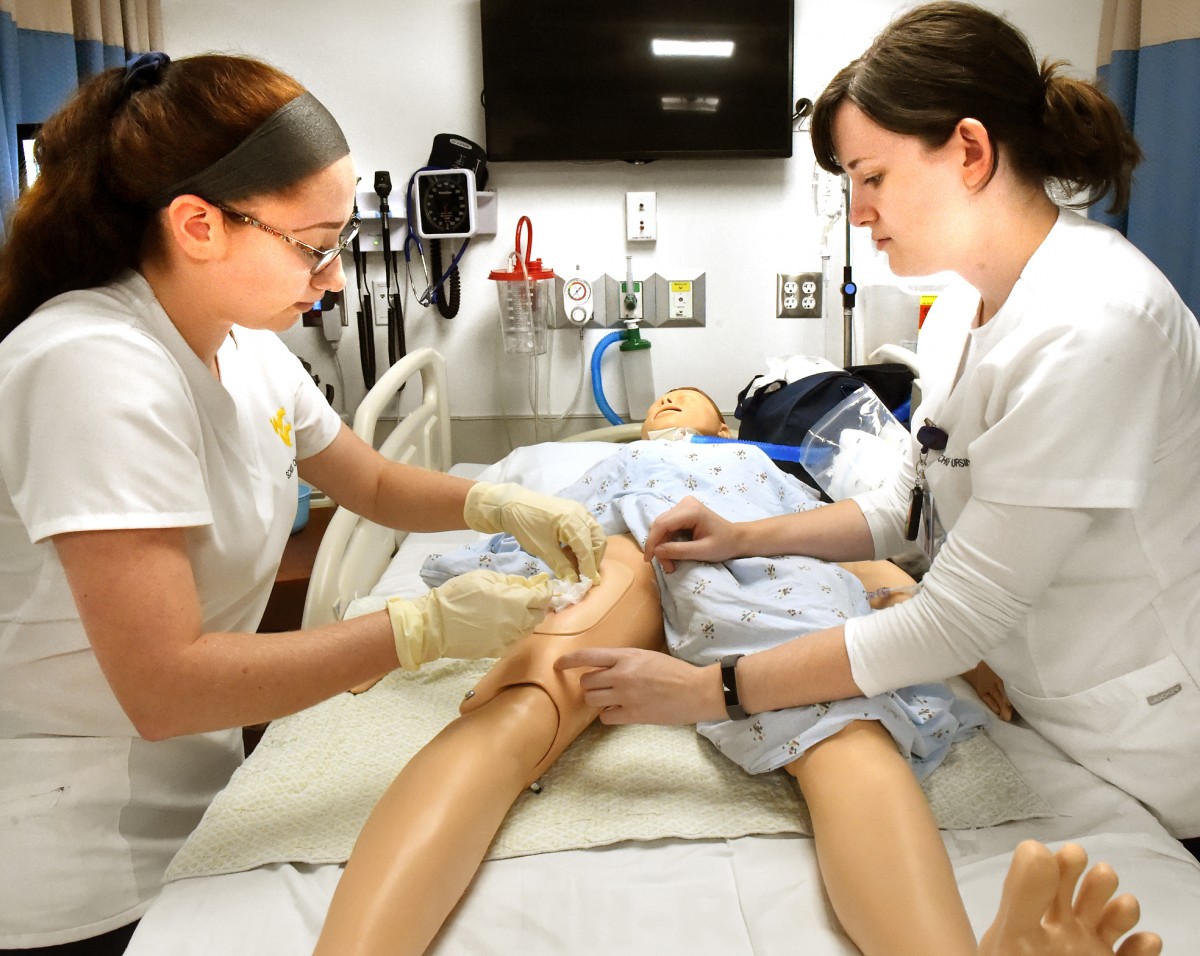MORGANTOWN — Students at WVU’s Health Sciences Campus saved a mannequin’s life Sept. 18 in preparation to save a real life one day.
“Dad, what’s wrong?” Jason Craig, simulation specialist, shouted. “Somebody help me!”
Only seconds later, nursing students ran toward the patient — a high-tech mannequin that can make lung and heart sounds, that was in simulated cardiac arrest — to begin evaluation and treatment.
The nursing students began CPR, while one ran to retrieve a defibrillator.
A short time later, medical and pharmacy students arrived with a “crash cart” that carries medicine, airway management equipment and the equipment needed to setup an IV, said Dan Summers, director of STEPS, WVU’s simulation center.
Medical and pharmacy students continued the treatment started by nursing students until, several minutes later, paramedics with WVU’s HealthTeam Critical Care Transport arrived to take the patient to the hospital.
The drill was part of National Healthcare Simulation Week, Summers said.
He said Tuesday’s simulation and others like it give students hands-on experience in critical situations like the ones they will face in a clinical setting.
Luke Velickoff, a junior nursing student, said the simulations help build relations between the different majors at the Health Sciences campus.
“You gain respect for each other,” Velickoff said.
Christy Burnhart, director of nursing simulations, said that type of inter-professional relationship building is essential later in a medical professional’s career.
She explained that each year there are many communication-related deaths and those deaths are preventable.
Post-simulation, students hold a debrief, where they discuss what went right, wrong and what could be done better. Burnhart said student feedback has been positive about the simulations.
Tweet Will Dean @WillDean_DP; wdean@domininionpost.com




